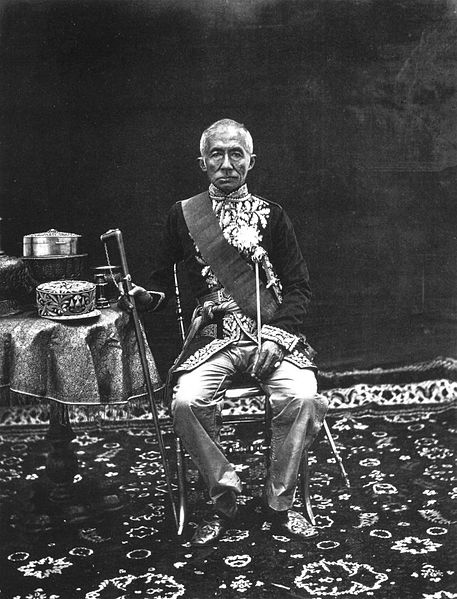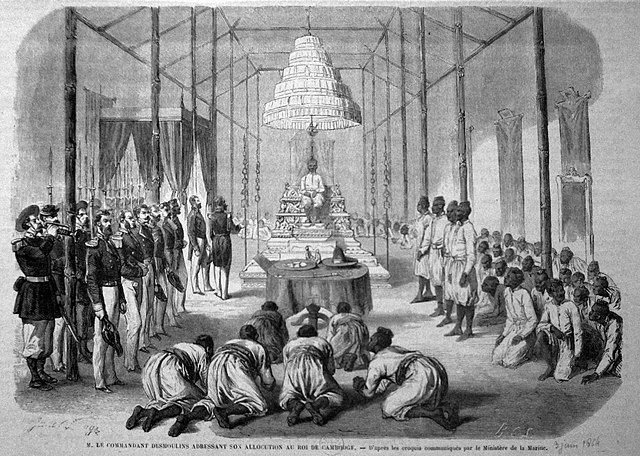Kingdom of Rattanatingsa or Kingdom of Chiang Mai was the vassal state of the Siamese Rattanakosin Kingdom in the 18th and 19th century before being annexed according to the centralization policies of Chulalongkorn in 1899. The kingdom was a successor of the medieval Lanna kingdom, which had been under Burmese rule for two centuries until it was captured by Siamese forces under Taksin of Thonburi in 1774. It was ruled by the Thipchak Dynasty and came under Thonburi tributary.
Dominions of the Chetton dynasty around 1883
Kawila, originally ruler of Lampang, became ruler of Chiang Mai in 1797 and was appointed as King of Chiang Mai in 1802 as a vassal ruler. Kawila played a great role in the transfer of Lanna from Burma to Siam and in defenses against Burmese invasions.
Wat Pasak in Chiang Saen is one of the few structures that survived the destruction of Chiang Saen in 1804.
Expeditions by Lanna princedoms into northern Tai Khuen and Tai Lue states.
Rattanakosin Kingdom (1782–1932)
The Rattanakosin Kingdom, the Kingdom of Siam, or the Bangkok Empire, were names used to reference the fourth and current Thai kingdom in the history of Thailand. It was founded in 1782 with the establishment of Rattanakosin (Bangkok), which replaced the city of Thonburi as the capital of Siam. This article covers the period until the Siamese revolution of 1932.
View of the city of Bangkok in 1822
Photograph of King Mongkut (Rama IV) (r. 1853–1868) in western style uniform
Coronation of King Norodom of Cambodia at Oudong in June 1864
Somdet Chaophraya Si Suriyawong (Chuang Bunnag) emerged to prominent roles after Bowring Treaty of 1855, became regent of young King Chulalongkorn in 1868, given highest rank of Somdet Chaophraya in 1873, and retained powers until his death in 1883.








